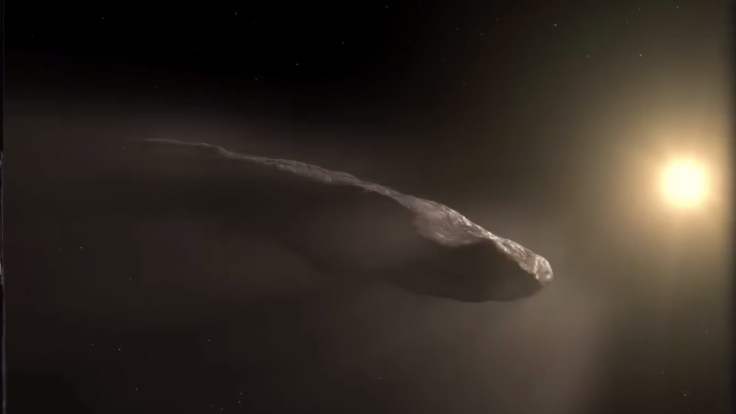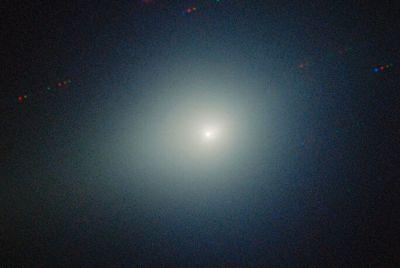From Memes to Mayhem: How the 'Alien Comet' Sparked a Global Culture Craze Overnight
Discovered just weeks ago, interstellar comet 3I/ATLAS has inspired viral memes, conspiracy theories, and fan merchandise—while scientists insist it's entirely natural.

The 3I/ATLAS comet has turned from a quiet astronomical discovery into a viral cultural phenomenon.
What began as a quiet astronomical observation has erupted into a worldwide online spectacle. Within days of its announcement, hashtags such as #3iAtlas began trending on X (formerly Twitter), with users posting everything from mock doomsday videos to digital art celebrating the 'alien comet.'
A viral Reddit thread captured the frenzy, noting that 'Twitter [was] going a bit crazy today on 3I/ATLAS.' Detected on 1 July 2025 by the ATLAS telescope in Chile, the interstellar object has inspired an explosion of memes, hashtags, and conspiracy theories.
Scientists, however, insist there's nothing alien about it—just humanity's fascination colliding with the cosmos.
Scientists Dismiss Alien Theories
Astronomers have repeatedly confirmed that 3I/ATLAS is a natural comet, not an extraterrestrial craft. According to BBC Sky at Night, its gas and dust emissions match those of typical icy bodies reacting to solar heat.
Key facts from current data:
- Estimated diameter: several miles
- Speed: 61 km per second
- Composition: gas, ice, and dust consistent with cometary behaviour
'31/ATLAS behaves exactly as we had expect for a natural comet,' said Dr Amelia Harper of the European Space Agency.
Despite online speculation, there's no scientific evidence supporting alien or artificial origins.
Researchers estimate that 3I/ATLAS is several miles wide and travelling at about 61 km per second — making it one of the largest and fastest interstellar visitors ever recorded.
The Guardian reported that its origin likely lies beyond our Solar System, possibly in the distant reaches of another star system billions of years old.
Social Media Frenzy and Viral Culture
What began as astronomy quickly became internet theatre. From memes to mock doomsday countdowns, users have transformed 3I/ATLAS into the year's biggest social media trend.
On TikTok, creators posted fake 'signal detections,' while YouTube channels discussed supposed 'Fibonacci pulse patterns', a claim debunked by scientists. NASA and ESA both reaffirmed that no unusual emissions have been detected.
NASA Statement: 'The object poses no threat to Earth and follows a stable, natural trajectory.'
'It's the perfect storm of science and pop culture,' said a University of Cambridge astrophysicist.
Viral curiosity often distorts facts—but it also draws millions to real science.
Still, Reddit's r/space community lamented the sensationalism, with one user writing, 'Every news site just slaps on 'Harvard professor says...' and gets easy clicks.'
Merch, Memecoins, and Mass Participation
The 3I/ATLAS craze has expanded beyond social media. Independent designers have launched T-shirts, posters, and mugs with slogans such as 'Earth's Interstellar Guest'. Cryptocurrency traders even introduced a parody 3I Atlas Coin, described online as 'a risky but exciting meme token.'
Highlights:
- Viral hashtags on X and Reddit
- 3I/ATLAS merchandise sales up 300% week-on-week
- Parody cryptocurrency launched within days
On Facebook, users have mixed humour with hysteria. One widely shared post claimed that 'something massive just slammed into 3I/ATLAS,' sparking thousands of comments speculating about a possible collision with another object — none of which have been substantiated by astronomers.
Why the Comet Captured Imaginations
Experts say the viral fascination is partly due to the object's rarity. Only two other interstellar visitors--ʻOumuamua in 2017 and 2I/Borisov in 2019--have ever been observed passing through our Solar System.
As The Guardian noted, 3I/ATLAS combines mystery, rarity, and visual spectacle, making it ideal for social media storytelling.
'It's the perfect storm of science and pop culture,' said a University of Cambridge astrophysicist quoted by the magazine. 'People project their hopes, fears, and humour onto the unknown--and the internet magnifies it.'
Real Science Beneath The Hype
Behind the memes, astronomers are using 3I/ATLAS to gain a deeper understanding of interstellar chemistry. Instruments aboard the James Webb Space Telescope detected high carbon dioxide levels relative to water, suggesting the comet formed in a cold outer region of another system.
NASA and the European Space Agency plan ongoing monitoring as it exits the Solar System. These findings could reshape the understanding of planetary formation and the early composition of exoplanetary systems.
Beyond the viral noise, 3I/ATLAS provides a rare scientific window into the birthplaces of other worlds.
A Moment of Wonder
For all the exaggeration, the 3I/ATLAS phenomenon has drawn millions into following real science. Amateur astronomers report record traffic to sky-watching websites, and educators say students are asking new questions about space exploration.
Whether hailed as a messenger from another world or simply a beautiful wanderer, 3I/ATLAS has shown that curiosity about the cosmos still unites the online world, one meme at a time.
From memes to mayhem, the 3I/ATLAS comet has united millions in curiosity and comedy. While internet culture thrives on exaggeration, it has also reignited public interest in astronomy.
As the comet drifts into interstellar darkness, its legacy endures—a reminder that science, even when misunderstood, still has the power to captivate the world.
© Copyright IBTimes 2025. All rights reserved.



















